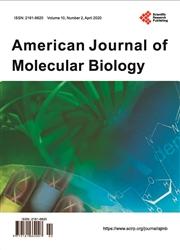Efficiency of Triple-SCoT Primer in Characterization of Genetic Diversity and Genotype-Specific Markers against SSR Fingerprint in Some Egyptian Barley Genotypes
引用次数: 12
Abstract
Ten Egyptian barley genotypes (2 commercial varieties and 8 breeding lines) were cultivated under normal condition at the Experimental Farm of Sakha Agricultural Research station and exposed to salinity stress condition at the Experimental Farm of El-hosainia plain Agricultural Research station, Elsharkia Governorate, Egypt, in an attempt to identify the relative salinity tolerant genotypes. A susceptibility index (SI) was used to estimate the relative stress loss because it accounted for variation in yield potential and stress intensity. Giza 123, Line-1, Line-5, Line-6 and Line-8 genotypes were considered as saline tolerant genotypes on the basis of their highly tolerance indices values. Barley genotypes were characterized by seven SSR markers and three SCoT primers in different combinations to discern the extent of genetic variation and develop a fingerprinting key. Normal SCoT reactions amplify single segments of DNA which are 15- to 19-mer long. A new strategy was used to increase SCoT potential in genetic diversity studies by using two and three different primer combinations per reaction. Amplification products scored a polymorphism percentage of 94.44% for Triple-SCoT and 90.91% for SSR, while the average no. of polymorphic fragments/primer was 17 and 7.14 in the two marker systems, respectively. On the other side, Triple-SCoT exhibited the highest average number of positive and negative genotype-specific markers. The cluster analysis of the studied genotypes using these different marker systems revealed four dendrograms varied in their topology. The dendrogram based on Triple-SCoT data exhibited the closest relationships to those illustrated by SSR dendrogram.三重SCoT引物在埃及大麦遗传多样性和SSR指纹图谱基因型特异性标记鉴定中的作用
以10个埃及大麦基因型(2个商品品种和8个育种系)为材料,分别在埃及萨哈农业研究站实验农场和Elsharkia省El-hosainia平原农业研究站实验农场进行正常条件和盐胁迫条件下的培养,试图鉴定相对耐盐基因型。利用敏感性指数(SI)来估计相对应力损失,因为它考虑了产量潜力和应力强度的变化。根据耐盐指数较高的特点,认为吉萨123、Line-1、Line-5、Line-6和Line-8基因型为耐盐基因型。利用7个SSR标记和3个SCoT引物在不同组合下对大麦基因型进行鉴定,以识别遗传变异程度,并建立指纹图谱。正常的SCoT反应可扩增15- 19毫长的DNA片段。在遗传多样性研究中,利用两种或三种不同的引物组合来增加SCoT的潜力。扩增产物的多态性率分别为94.44%和90.91%;多态性片段/引物的比值分别为17和7.14。另一方面,Triple-SCoT表现出阳性和阴性基因型特异性标记的平均数量最高。利用这些不同的标记系统对所研究的基因型进行聚类分析,揭示了四种不同拓扑结构的树状图。基于Triple-SCoT数据的树状图与SSR树状图的关系最为密切。
本文章由计算机程序翻译,如有差异,请以英文原文为准。
求助全文
约1分钟内获得全文
求助全文

 求助内容:
求助内容: 应助结果提醒方式:
应助结果提醒方式:


